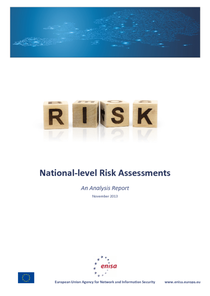National-level Risk Assessments: An Analysis Report
This report is based on a study and analysis of approaches to national-level risk assessment and threat modelling for cyber security which was conducted between April and October 2013. ENISA aims to provide an evidence-based methodology for establishing a National-level Risk Assessment in order to contribute to the wider objective of improving national contingency planning practices (NCPs) . This report will help towards rationalising national risk assessments in EU Member States in order to reduce or eliminate vulnerabilities of critical Information and Communication Technology (ICT) services and infrastructures. In conclusion we can see that understanding of the national approach to cyber security and how risk decisions are taken in different countries is important to ensure that the results of any National-level Risk Assessment reach key decision-makers at the right time. It is also clear that there are a variety of approaches and levels of sophistication used in National-level Risk Assessments. Qualitative tools appeared to be preferred due to the complexities of understanding risk in the cyber domain. Depending on the preconditions regarding implementation, risk assessment could be performed using a common set of methods or in a more decentralised fashion. Challenges included the diversity of methodologies and approaches to National-level Risk Assessments (which highlights the need for this guidance document) as well as the complexities of public–private cooperation. As might be expected, many countries studied drew lessons from others when preparing their National-level Risk Assessment programmes. Some countries had identified priorities that they were seeking to focus on, including greater understanding of threats, improved stakeholder engagement and better national CIIP frameworks. Based on an analysis of the data gathered we recommend the following: 1. Member States should understand better the underlying cyber threats and risks that they face and the impact to society. 2. Member States are advised to integrate National-level Risk Assessment into the lifecycle of NIS incident management and cooperation plans and procedures. 3. Member States should expand public–private sector dialogue and information sharing. 4. A practical step-by-step guide on how to perform National-level Risk Assessments should be developed, tested and maintained. Such a guide should be piloted by countries at the early stages of preparing their own National-level Risk Assessment programme. ENISA or another international institution would be appropriate bodies to oversee this action. 5. A catalogue of scenarios to help Member States in their National-level Risk Assessments should be established at EU level. Such a catalogue could be based on work already being done at ENISA on the threat landscape and incident reporting . 6. The EU community of practitioners with an interest in cyber National-level Risk Assessments should be established and strengthened as information exchange platform, e.g., within the framework of the European Commission’s NIS Platform . 7. Risk analysis expertise must be shared from other domains that assess complex cross-border risks, such as border security, financial services, aviation or public health for example within the European Commission’s NIS Platform and other activities organised by ENISA.
- Published
- Authors
- Panagiotis TRIMINTZIOS, ENISA, Razvan GAVRILA, ENISA
- Language
- Executive
summary - executive summary.pdf
